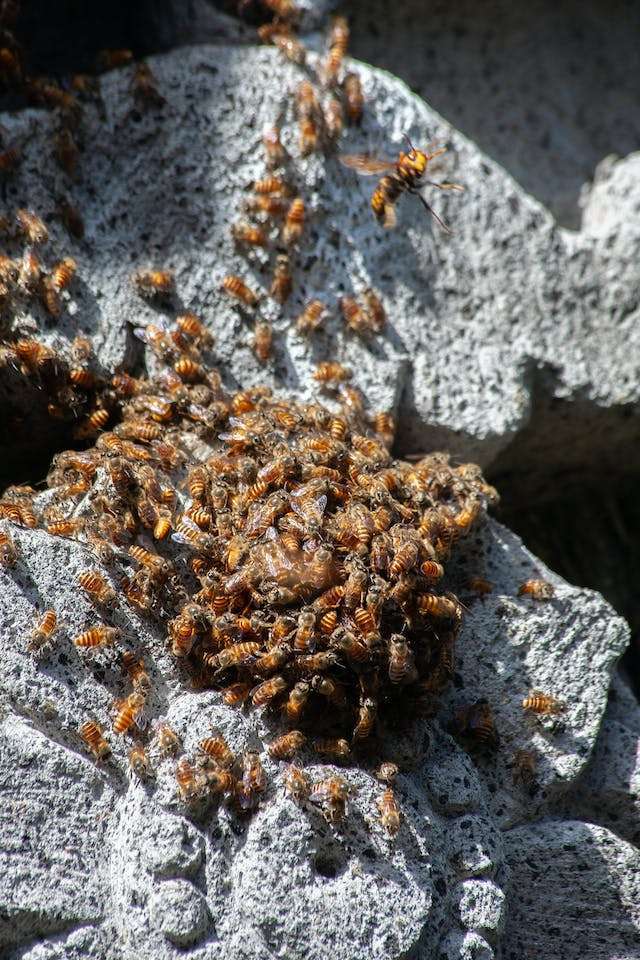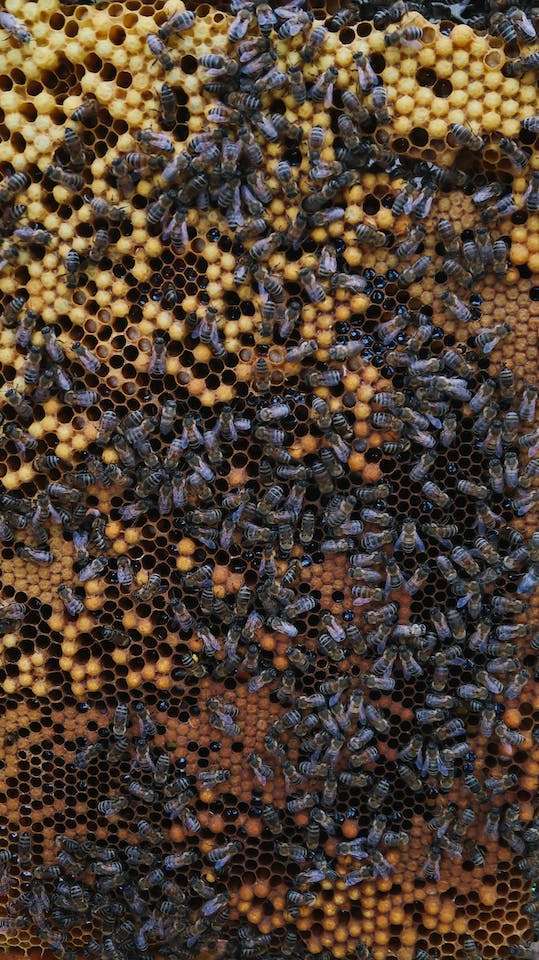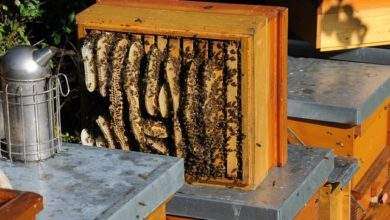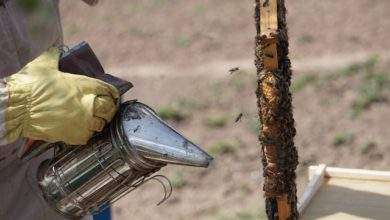Benefits of Thermal Imaging for Beekeepers

Thermal imaging technology is revolutionizing the way beekeepers monitor and manage their hives. By capturing temperature variations in the hive environment, this tool provides invaluable insights into the health and behavior of bee colonies.
In this article, we will explore the numerous benefits of thermal imaging for beekeepers, from monitoring hive health to identifying queen bee activity. With the ability to detect stressed or sick bees, manage hive temperature, find and capture swarms, and track queen bee activity, thermal imaging is enhancing the efficiency and success of beekeeping operations worldwide.
Explanation of Thermal Imaging
Thermal imaging, also known as infrared thermography, is a non-invasive technique that allows us to capture and visualize the temperature differences of objects or living organisms.
This technology leverages the ability of special thermal imaging cameras to detect and measure the infrared radiation emitted by objects. The data captured is then translated into a visual representation, known as a thermogram, which displays variations of temperature in different colors or patterns.
Importance of Thermal Imaging for Beekeepers
Thermal imaging has revolutionized the way beekeepers monitor and manage their hives. By providing an unparalleled perspective into the temperature dynamics of beehives, this technology enables early detection of diseases, effective hive management, swarming prevention, and comprehensive colony health assessment.
By embracing thermal imaging, today’s beekeepers can safeguard their colonies and contribute to the preservation of these essential pollinators.
Benefits of Thermal Imaging for Beekeepers
Monitoring Hive Health:
- Identifying Stressed or Sick Bees: Thermal imaging enables beekeepers to identify stressed or sick bees with remarkable accuracy. By capturing infrared images of the hive, subtle temperature variations can be detected. Bees suffering from health issues or under stress may exhibit abnormal heat patterns, which can be easily identified using thermal imaging cameras. Early detection allows beekeepers to take immediate action, providing necessary care and attention to prevent the potential loss of the entire colony.
- Detecting Hotspots in the Hive: Thermal cameras are incredibly effective in detecting hotspots within the hive. Hotspots can indicate a multitude of issues such as improper ventilation, equipment malfunctions, or even the presence of pests or predators. Identifying these hotspots promptly ensures that necessary measures can be taken to address the underlying causes and prevent any further damage to the hive.
- Tracking Changes in Temperature Over Time: Thermal imaging provides beekeepers with the opportunity to track changes in temperature over time. By routinely capturing thermal images of the hive, any deviations from the norm can be readily identified. Regular monitoring helps beekeepers understand the impact of changing environmental conditions or hive management practices on the colony’s health. Such insights enable timely adjustments, ensuring the wellbeing of the bees throughout the year.
- Assessing the Overall Health of the Bee Colonies: Assessing the overall health of bee colonies is a crucial aspect of beekeeping. Thermal imaging allows beekeepers to evaluate the vitality of their hives by analyzing the distribution of temperature across the hive. Healthy colonies tend to have consistent and uniform heat patterns, indicating an active and thriving bee population. Conversely, abnormal or asymmetric temperature distributions can indicate potential issues such as loss of colony strength, queen failure, or diseases. By using thermal imaging to assess colony health, beekeepers can proactively address any emerging problems and maintain strong and resilient bee populations.
- Comparing Thermal Images to Detect Abnormalities: One of the most significant advantages of thermal imaging is its ability to enable a comparative analysis of thermal images over time. By overlaying images taken at different intervals, changes in temperature patterns become evident. This invaluable tool allows beekeepers to detect abnormalities that may have otherwise gone unnoticed, such as small temperature variations that indicate subtle changes in the hive ecosystem. Comparing thermal images aids in identifying potential red flags and understanding the impact of management practices on hive health.
Managing Hive Temperature
Beekeeping requires a vigilant approach to hive management to ensure the health and productivity of our pollinator friends. One crucial aspect of hive management is monitoring and maintaining the temperature within the hive.
Maintaining the correct temperature is essential for the survival and productivity of honeybee colonies. By utilizing thermal imaging technology, beekeepers can effectively manage hive temperature in the following ways:
- Monitoring Environmental Conditions: Thermal imaging allows beekeepers to monitor the ambient temperature inside and outside the hive, giving them valuable insights into the overall climate conditions. By regularly assessing these conditions, beekeepers can make informed decisions and take necessary actions to maintain an optimal environment for their bees.
- Preventing Overheating or Chilling of the Hive: Thermal imaging enables beekeepers to identify potential hot or cold spots within the hive. By identifying these areas, beekeepers can take immediate measures to prevent overheating or chilling, ensuring the hive remains within the ideal temperature range for the bees’ comfort and survival.
- Optimizing Conditions for Brood Development: Brood development is a crucial process in a honeybee colony’s lifecycle. Thermal imaging allows beekeepers to monitor the temperature distribution within the hive and ensure that the brood area maintains the ideal temperature required for healthy development. By optimizing these conditions, beekeepers can promote the growth of strong and thriving colonies.
- Minimizing Stress on the Bees: Thermal imaging helps beekeepers identify any temperature-related stressors that may be affecting their bees. By promptly addressing such stressors, beekeepers can reduce the risks of colony collapse and enhance the overall well-being of their bees.
- Incorporating Thermal Data into Hive Management Strategies: Thermal imaging provides beekeepers with quantifiable data about the temperature variations within the hive. By incorporating this data into their hive management strategies, beekeepers can make informed decisions regarding hive placement, ventilation, insulation, and other factors that directly impact hive temperature. This integration of thermal data enhances the beekeepers’ ability to create optimal hive environments, leading to healthier and more productive honeybee colonies.
Finding and Capturing Swarms

Beekeepers have found immense benefits in utilizing thermal imaging for their operations, particularly when it comes to finding and capturing swarms.
- Identifying Swarms with Thermal Imaging: One of the primary benefits of thermal imaging for beekeepers is its ability to identify swarms. Traditional methods may require careful observation, making it challenging to spot swarms, especially in vast beekeeping areas. However, with thermal imaging, beekeepers can easily detect swarms by identifying the heat signatures produced by clusters of bees. This saves time and allows beekeepers to take prompt action when swarms are detected.
- Tracking Swarm Movements: Once a swarm has been identified, tracking its movements becomes essential for successful capture. Thermal imaging helps beekeepers monitor the swarm’s trajectory and understand how it behaves. By capturing heat signatures, beekeepers can determine the swarm’s direction, speed, and potential settling points. This information enables beekeepers to position themselves strategically, increasing their chances of capturing the swarm effectively.
- Locating Swarms in Hard-to-Reach Areas: Bees are resourceful when it comes to finding suitable locations for swarming, often choosing hard-to-reach areas. Prior to thermal imaging, locating these swarms in dense vegetation, buildings, or tall trees required significant effort and sometimes even involved hiring specialized equipment. However, thermal imaging simplifies the process by enabling beekeepers to identify the thermal anomalies created by swarms in these challenging locations. This technology helps beekeepers pinpoint the exact location of swarms, even in the most inaccessible areas, improving overall efficiency.
- Reducing Time and Effort Required to Capture Swarms: Traditional swarm capture methods often involve a considerable amount of time and effort. Beekeepers may spend hours waiting for a swarm to settle or manually searching for their location. However, thermal imaging expedites the process by providing beekeepers with real-time information on swarm locations. By swiftly locating swarms, beekeepers can significantly reduce the time and physical exertion associated with their capture. This increased efficiency allows them to focus their efforts on other critical aspects of beekeeping.
- Increasing Success Rates in Swarm Collection: Successful swarm collection requires precise timing and swift action. With thermal imaging, beekeepers have a higher chance of capturing swarms effectively, leading to increased success rates. By utilizing thermal cameras, beekeepers can detect swarms early, position themselves strategically, and act promptly. This proactive approach enhances the probability of capturing the swarm intact and without causing harm to the bees. Ultimately, increased success rates in swarm collection contribute to healthier bee populations and more productive beekeeping practices.
Identifying Queen Bee Activity
From assisting in locating the queen bee to assessing her reproductive activity, thermal imaging provides invaluable insights into the inner workings of beehives.
- Locating the Queen Bee in the Hive: One of the most significant challenges beekeepers face is locating the elusive queen bee within the hive. However, with the help of thermal imaging, this task has become considerably easier. By capturing thermal images of the hive, beekeepers can pinpoint the precise location of the queen bee. The difference in heat signature emitted by the queen bee’s body allows her to stand out from the rest of the colony, facilitating rapid identification and minimizing disturbance to the hive.
- Monitoring the Queen’s Movements: Thermal imaging technology not only helps beekeepers locate the queen bee but also enables them to monitor her movements within the hive. By regularly observing the queen’s thermal signature, beekeepers can track her activity, ensuring that she is fulfilling her crucial role in egg-laying and hive maintenance. Any abnormal patterns or indications of reduced activity can be swiftly identified, alerting the beekeeper to potential issues and allowing for timely intervention.
- Assessing the Queen’s Reproductive Activity: The queen’s reproductive activity is vital for the colony’s survival and productivity. Thermal imaging offers invaluable insights into this aspect of queen bee behavior. By analyzing thermal images over a period, beekeepers can evaluate the consistency and frequency of the queen’s egg-laying patterns. This data helps identify any potential reproductive issues, such as a decrease in the production of brood, enabling the beekeeper to take appropriate steps to address the concern and maintain the colony’s health.
- Ensuring the Health and Productivity of the Colony: Thermal imaging serves as a valuable tool in assessing the overall health and productivity of a bee colony. By analyzing the temperature distribution throughout the hive, beekeepers can identify potential hotspots or cold areas. These variations in temperature can be indicative of hive stress, poor insulation, or the presence of pests or diseases. Promptly identifying and addressing these issues can help maintain a healthy and productive colony, ensuring optimal honey production and the well-being of the bees.
- Making Informed Decisions about Queen Bee Management: Lastly, thermal imaging enables beekeepers to make well-informed decisions regarding queen bee management. By regularly monitoring the queen’s thermal profile, beekeepers can determine the optimal time for requeening or introducing new queens to the colony. This technology eliminates the need for invasive and disruptive hive inspections, providing a non-intrusive and accurate method for evaluating the queen’s performance. Beekeepers can confidently plan queen-related interventions, ultimately leading to improved colony management and increased success rates.
Types of Thermal Imaging Devices Available
In recent years, thermal imaging technology has become increasingly accessible and affordable, offering beekeepers a valuable tool for monitoring hive health and detecting potential problems.
Here are some of the various types of thermal imaging devices available to beekeepers, including both hand-held devices and smartphone applications, providing a comprehensive overview of their features and benefits.
Hand-held Thermal Imaging Devices:
1. FLIR C3 Compact Thermal Camera:
- Designed for compactness and ease of use.
- Features a high-resolution thermal sensor for precise temperature detection.
- Equipped with built-in WiFi for seamless data transfer to other devices.
- Offers a wide temperature measurement range, making it suitable for various applications.
- Enables multiple imaging modes, including thermal, visual, and picture-in-picture.
- Compact and pocket-sized, allowing for convenient on-the-go use.
- Presents a broad temperature detection range for versatility.
- Provides adjustable thermal span, level, and emissivity settings for accurate readings.
- Features a durable and rugged design, suitable for outdoor use in diverse weather conditions.
Smartphone Apps for Thermal Imaging:
FLIR One Pro LT iOS Pro-Grade:
- Powerful Infrared camera mobile accessary with adjustable one fit connector
- Measure temperatures from -20C to 120C (-4F to 248F).
- Adjustable connector extends by up to 4 mm, so you can secure your FLIR ONE Pro LT to your mobile device while its still in the protective case.
- Transforms your iOS device into a powerful thermal infrared camera
- Capture and share thermal images and videos
- Blends thermal and visible spectrum for more detail and enhanced resolution
- High Resolution Thermal Imaging Camera for iOS
- Waterproof case that protects against the elements
- Captures Photos & Videos, Spot Temperature, High-Low Temperature, Threshold Mode, 9 Color Palettes, Auto & Adjustable Span/Level Control, 4 Emissivity Presets
The availability of both hand-held devices and smartphone apps has made this technology accessible and easy to use for beekeepers of all levels of experience. Most beekeepers will opt for the Smartphone apps, due to cost and ease of use.
Conclusion
Thermal imaging technology has transformed the way beekeepers monitor and manage their colonies, offering numerous benefits that were once unimaginable. By harnessing this powerful tool, beekeepers can ensure the health and productivity of their colonies, make informed decisions about queen bee management, and ultimately maximize their efficiency and success in the fascinating world of beekeeping.

FAQ:
What is thermal imaging, and how can it benefit beekeepers?
- Thermal imaging is the technology that captures and measures infrared radiation emitted by objects. For beekeepers, thermal imaging allows them to detect temperature variations within beehives, helping identify potential issues such as queen health, hive pests, or improper insulation.
How does thermal imaging help monitor the health of bee colonies?
- Thermal imaging cameras can quickly identify hotspots or cool areas within beehives, indicating potential problems. By monitoring temperature patterns, beekeepers can identify weak or failing colonies, identify stress points, and take appropriate measures to prevent hive collapse or disease outbreaks.
Can thermal imaging detect pests or parasites in beehives?
- Yes, thermal imaging can help beekeepers detect pests and parasites within beehives. Varroa mites, for example, raise the temperature of infested bee pupae. By scanning beehives with thermal cameras, beekeepers can identify these temperature anomalies, allowing them to target and treat affected hives more effectively.
Can thermal imaging help locate the queen bee?
- While thermal imaging alone may not locate the queen bee directly, it can indirectly assist by revealing temperature patterns within the hive. Significant temperature variations may suggest the presence of the queen, as her presence can generate localized heat due to increased bee activity.
Can thermal imaging assist in managing hive temperature?
- Yes, thermal imaging helps beekeepers monitor environmental conditions, prevent overheating or chilling of the hive, optimize conditions for brood development, minimize stress on the bees, and incorporate thermal data into hive management strategies.
How does thermal imaging assist with swarm prevention?
- Swarming is a natural behavior of honey bees, but it can lead to the loss of productive colonies. Thermal imaging helps beekeepers identify colonies that are preparing to swarm by detecting increased heat signatures in specific hive areas. This early warning allows beekeepers to take preventive measures to avoid swarm formation.
Can thermal imaging help identify insulation issues in beehives?
- Yes, thermal imaging is excellent for identifying insulation issues in beehives. By examining thermal patterns, beekeepers can determine if there are areas of heat loss or improper insulation, allowing them to optimize hive efficiency, especially during colder months.
Does thermal imaging require direct contact with the beehives?
- No, thermal imaging does not require direct contact with the beehives. It is a non-intrusive method that allows beekeepers to monitor temperatures remotely, ensuring minimal disturbance to the bee colonies.
Can thermal imaging be integrated with existing beekeeping practices?
- Yes, thermal imaging is a complementary tool that can easily be integrated into existing beekeeping practices. Beekeepers can use thermal imaging alongside other standard inspection methods to enhance their understanding of hive health, optimize management decisions, and create more sustainable beekeeping practices.




